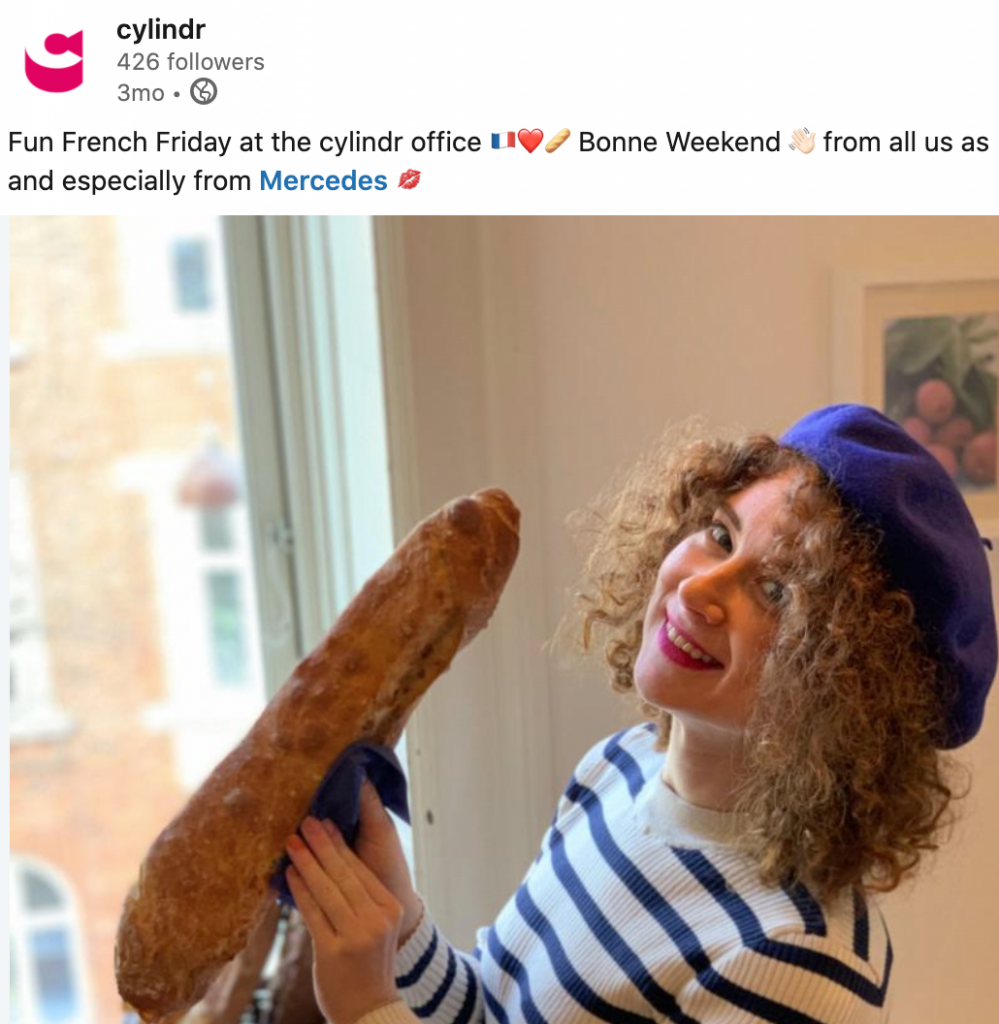
If you’re in B2B marketing, you’ll naturally understand the importance of creating great content. But great content will only be seen and shared if you distribute it effectively. This is part two of a three-part blog series relating to using LinkedIn in your B2B marketing. Here are some best practices for sharing content on LinkedIn.
Social media allows you to share your website content, whitepapers and blog posts with your followers, their followers, and millions of more individuals across their platform of choice.
While Facebook and Twitter have a casual, social networking approach, don’t forget that LinkedIn is a professional social media platform. It’s okay to be conversational, but the content you share on your company page should be aligned with your brand and company values.
Think about LinkedIn as more of a thought leadership platform. The content on your LinkedIn page should be about your organization or your industry.
Try not to over promote
“The Content Marketing Institute promotes the 80/20 rule: 80 percent of your content should be about your customers and promotional material should be limited to 20 percent. Most of your posts should provide your customers with useful information that will help them solve a problem and address a pain point. Blogs, videos and case studies are great ways your business can distribute useful content,” advises Jackie Fedeli in a SharpSpring article.
By providing high-quality content about your organization or sharing industry knowledge, you are demonstrating thought leadership and putting a stop to propaganda.
Some examples of promotional posts could be:
- Awards and recognitions
- New business acquisitions or partnerships
- Upcoming or recent speaking engagements
- Trade shows or events that your business will be attending
- Press releases
Post a mix of content related to your company’s unique offering, whether it be service or product, and limit content that is overly promotional.
LinkedIn is a unique space for networking and sharing high-quality content. It doesn’t necessarily need to be your own content, either. If you come across content from a credible source that relates to the industry you serve or your customers, share it!
Such content is also fitting for personal LinkedIn profiles and you can use a service like Sociabble or Bambu to encourage your employees to share the articles, videos and blog posts on their personal profiles.
Using hashtags on LinkedIn
Fedeli shares her expertise on hashtags: “Hashtags are like your keywords. You want to include the relevant terms in your post, but you don’t want to go overboard. Think of it like SEO; keyword stuffing causes posts to look spammy and unprofessional. The same may be said about hashtags.”
“The social media management platform, Hootsuite, suggests a maximum of five per post. Try to work one or two hashtags into the copy of your post and put the rest at the end. If you can’t fit them, it’s ok to put them all in the end. Don’t cram in a hashtag if it doesn’t fit. Remember: Avoid keyword stuffing,” shares Fedeli. It’s common knowledge that overdoing it is penalized by the algorithm.
“Once you have hashtags in mind, search those hashtags on LinkedIn and confirm they are existing hashtags that hold your intended meaning. An acronym in your business or industry could also be used by another type of organization and have a completely different meaning. Pay attention to the type of content that is trending with that hashtag. If it doesn’t match your type of content, choose something more relevant.
“The goal is to use a hashtag that is popular or has an established following to increase visibility of your post, but there is no rule against creating your own if you want to start a trend.
“If you are holding a large event, such as a conference and you’re expecting several posts regarding the event, consider a tag with the conference name and year and include it in posts regarding the event. If other businesses are taking part in the event, ask them to use the hashtag in their posts. Keep an eye on this hashtag to see what followers and attendees have to say.”
When do I post on LinkedIn?
Let’s imagine that want to promote an upcoming webinar. It’s okay to promote your webinar with multiple different posts. Craft a series of posts with relevant hashtags and custom images to promote the webinar (remember to include the registration link!).
It is a good idea to post each of these on different days of the week and different times of the day to reach different audiences. Spreading posts out also allows you to mix in other content so visitors to your page will not see a string of posts promoting the same event.
There are a lot of articles online that claim to have researched the best times to post to LinkedIn. One school of thought is that because it was a business-related platform, post during business hours. But there’s no hard and fast rule on timing that applies to every campaign and every piece of content. Using a one-size-fits-all approach hasn’t ever helped anyone really.
You’ll find hundreds of articles that suggest best times to post, but if all marketers are following those, then your posts would only get lost in an ocean of posts, competing with each other for attention.
A curated and measured approach is most effective, and you can achieve this through looking a little closer at your analytics. For a detailed description of how to use your LinkedIn analytics more strategically, see part one of this blog post series.
Targeting your audience
There are a staggering 630 million profiles on LinkedIn, so targeting your audience makes a lot of sense if you use LinkedIn ads. Considering the number of senior-level decision makers on LinkedIn (currently about 180 million), it can be a great space to market your B2B products and/or services.
LinkedIn targeting allows you to reach specific audiences and filter out those who you don’t. If you produce content in English and Spanish, for example, you can target each piece separately to users based on their preferred language.
There are many more targeting options if you want to reach organizations based on size, industry, or an individual based on job function. If you are a B2B food ingredients company, it may be worthwhile to target your posts in the food production industry.
“One caveat to targeting is that it is a filter and applying too many can narrow your audience more than intended. It may be a good idea to choose between industry and job function rather than selecting categories in both – unless your content is very specific,” warns Fedeli.
Showcase pages
Fedeli adds, “If your organization is large and works with a variety of different types of businesses, has multiple lines of business, or a separately branded division, you may want to consider creating LinkedIn Showcase pages for those segments. This allows users to follow the pages and content most relevant to them.
“If you decide to set up Showcase pages for product lines or business segments, you won’t necessarily need to target these pages because they already have a specialized audience.”
Employees as social media marketers
“Having employees linked to your profile establishes credibility for your business. Encourage your employees to join LinkedIn and list your company as their current employer if they have not already done so. Help your employees get started by hosting a LinkedIn lunch and learn. Make sure they know the basics of LinkedIn and how important they are to your LinkedIn marketing strategy by encouraging them to engage with your posts.
“A recent LinkedIn blog post says that only 3 percent of employees share company content, but they generate 30 percent of all content engagement for a typical business. When employees share your content, it is visible to their network, and if their network engages with the content, it can potentially reach their connection’s networks,” says Fedeli. That’s the point of networking, right?
Human experiences perform well

Fedeli says, “In my experience, posts that showcase pictures of the people in the organization get more likes than articles. If you host a company-wide team building or charitable event, share pictures with your followers. Your employees are more likely to share images that they can relate to.”
Some things to remember
LinkedIn is fast becoming THE online business tool for B2B marketers.
To make the most out of this social platform remember to:
- Utilize LinkedIn best practices
- Develop your own connections with your profile and share and target content via your company’s page.
- Connect with employees and let them be your advocates.
And don’t forget, just like SEO, social media best practices change over time, so be sure to stay up to date with the latest trends to keep your LinkedIn marketing strategy relevant.
Stay tuned for the third blog post in this series, which looks at how you can use LinkedIn when events or shows are cancelled. And if you need any help with content creation, content marketing or social media management, the team at cylindr can help! Reach out to us today!
Thank you to our partner, SharpSpring, for input to this blog post.
Like this post? Subscribe now and get notified about new content!





